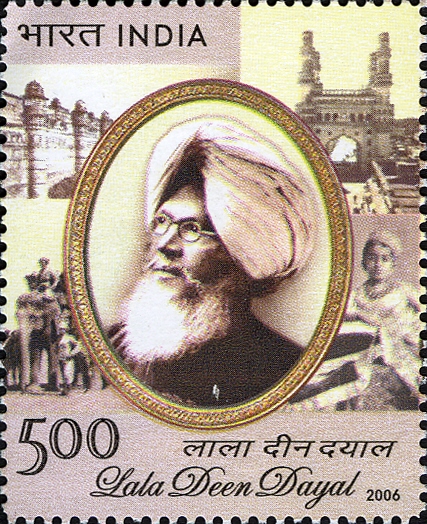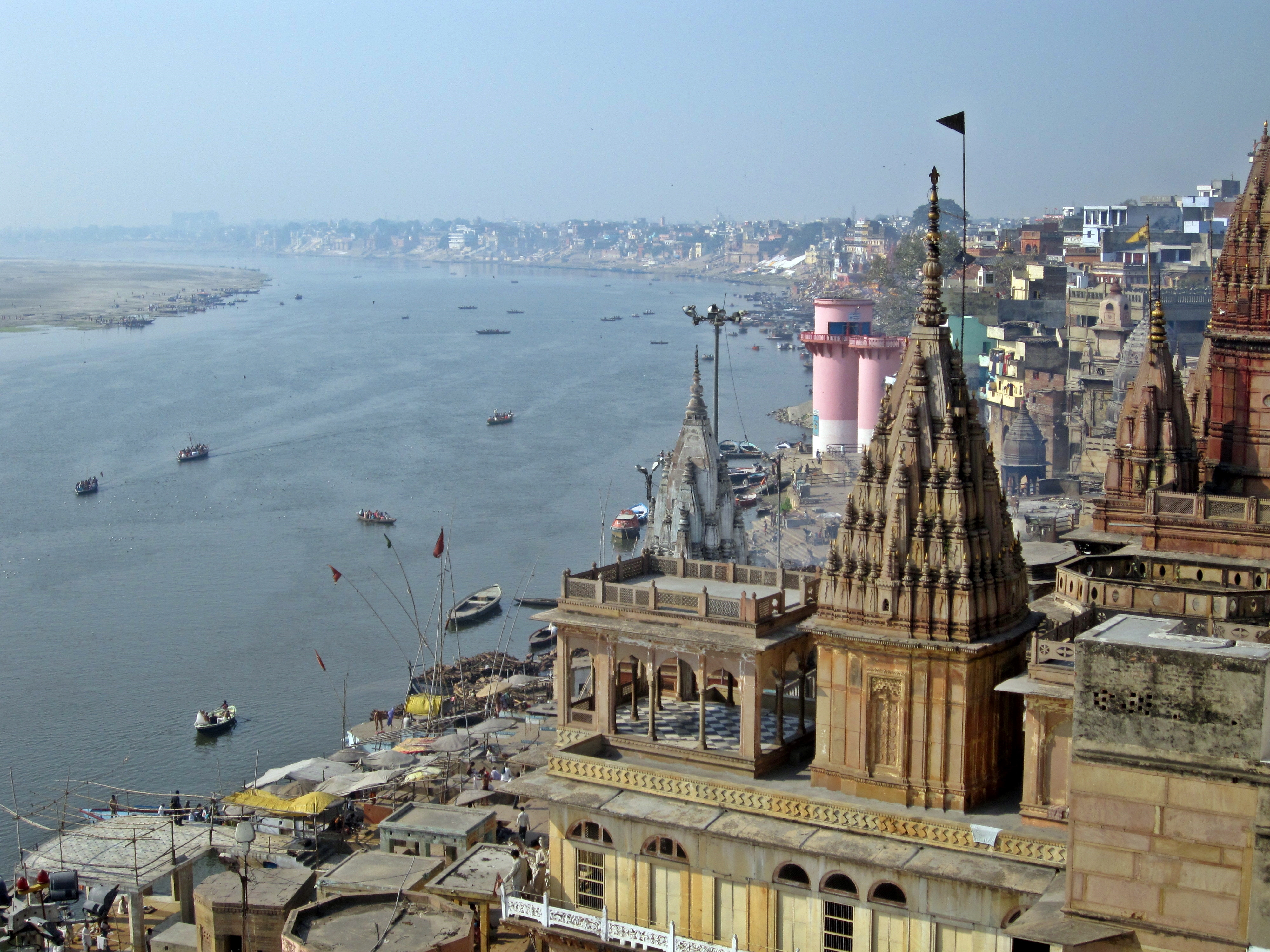|
Gopachal Rock Cut Jain Monuments
Gopachal rock-cut Jain monuments, also called ''Gopachal Parvat'' Jaina monuments, are a group of Jain carvings dated to between 7th and 15th century. They are located around the walls of the Gwalior Fort, Madhya Pradesh. They depict Tirthankaras in seated Padmasana posture as well as standing Kayotsarga posture, in the typical naked form of Jain iconography. The number of Jain rock shrines at Gwalior, with numerous monumental statues, is unmatched anywhere else. James Burgess writes: "In the 15th century, during the reign of the Tomara Rajas, the Jains seem to have been seized with an uncontrollable impulse to convert the cliff that sustains the fort into a great shrine in honour of their religion, and in a few years excavated the most extensive series of Jaina caves known to exist anywhere." The Gopachal Jain collosi cave temple is one of the Archaeological Survey of India's ''Adarsh Smarak Monument'' along with other monuments in the Gwalior Fort. Location The Gopachal ... [...More Info...] [...Related Items...] OR: [Wikipedia] [Google] [Baidu] |
Jainism
Jainism ( ), also known as Jain Dharma, is an Indian religion. Jainism traces its spiritual ideas and history through the succession of twenty-four tirthankaras (supreme preachers of ''Dharma''), with the first in the current time cycle being Rishabhadeva, whom the tradition holds to have lived millions of years ago, the twenty-third ''tirthankara'' Parshvanatha, whom historians date to the 9th century BCE, and the twenty-fourth ''tirthankara'' Mahavira, around 600 BCE. Jainism is considered to be an eternal ''dharma'' with the ''tirthankaras'' guiding every time cycle of the cosmology. The three main pillars of Jainism are ''ahiṃsā'' (non-violence), ''anekāntavāda'' (non-absolutism), and ''aparigraha'' (asceticism). Jain monks, after positioning themselves in the sublime state of soul consciousness, take five main vows: ''ahiṃsā'' (non-violence), ''satya'' (truth), ''asteya'' (not stealing), ''brahmacharya'' (chastity), and ''aparigraha'' (non-possessiveness). These pr ... [...More Info...] [...Related Items...] OR: [Wikipedia] [Google] [Baidu] |
Jain Art
Jain art refers to religious works of art associated with Jainism. Even though Jainism has spread only in some parts of India, it has made a significant contribution to Indian art and architecture. In general Jain art broadly follows the contemporary style of Indian Buddhist and Hindu art, though the iconography, and the functional layout of temple buildings, reflects specific Jain needs. The artists and craftsmen producing most Jain art were probably not themselves Jain, but from local workshops patronized by all religions. This may not have been the case for illustrated manuscripts, where many of the oldest Indian survivals are Jain. Jains mainly depict ''tirthankara'' or other important people in a seated or standing meditative posture, sometimes on a very large scale. ''Yaksa'' and ''yaksini'', attendant spirits who guard the ''tirthankara'', are usually shown with them. Iconography of tirthankaras A tirthankara or Jina is represented either seated in lotus position ... [...More Info...] [...Related Items...] OR: [Wikipedia] [Google] [Baidu] |
Lala Deen Dayal
Raja Lala Deen Dayal (; 1844–1905; also written as 'Din Dyal' and 'Diyal' in his early years), famously known as Raja Deen Dayal) was an Indian photographer. His career began in the mid-1870s as a commissioned photographer; eventually he set up studios in Indore, Mumbai and Hyderabad. He became the court photographer to the sixth Nizam of Hyderabad, Mahbub Ali Khan, Asif Jah VI, who awarded him the title Raja Bahadur Musavvir Jung Bahadur, and he was appointed as the photographer to the Viceroy of India in 1885. He received the Royal Warrant from Queen Victoria in 1897. Early life and education Deen Dayal was born in Sardhana, Uttar Pradesh, near Meerut in a family of jewellers. He received technical training at Thomason College of Civil Engineering at Roorkee (now IIT Roorkee) in 1866 as an engineer in lower subordinate class. Career In 1866, Deen Dayal entered government service as head estimator and draughtsman in the Department of Works Secretariat Office in In ... [...More Info...] [...Related Items...] OR: [Wikipedia] [Google] [Baidu] |
Baburnama
The ''Bāburnāma'' ( chg, ; literally: ''"History of Babur"'' or ''"Letters of Babur"''; alternatively known as ''Tuzk-e Babri'') is the memoirs of Ẓahīr-ud-Dīn Muhammad Bābur (1483–1530), founder of the Mughal Empire and a great-great-great-grandson of Timur. It is written in the Chagatai language, known to Babur as ''Türki'' ("Turkic"), the spoken language of the Andijan- Timurids. During the reign of emperor Akbar, the work was translated into Persian, the usual literary language of the Mughal court, by a Mughal courtier, Abdul Rahim Khan-i-Khanan, in AH 998 (1589–90 CE). Bābur was an educated Timurid prince and his observations and comments in his memoirs reflect an interest in nature, society, politics and economics. His vivid account of events covers not just his own life, but the history and geography of the areas he lived in as well as the people with whom he came into contact. The book covers topics as diverse as astronomy, geography, statecraft, milita ... [...More Info...] [...Related Items...] OR: [Wikipedia] [Google] [Baidu] |
Deshna
In Jainism, a ''Tirthankara'' (Sanskrit: '; English: literally a 'ford-maker') is a saviour and spiritual teacher of the ''dharma'' (righteous path). The word ''tirthankara'' signifies the founder of a '' tirtha'', which is a fordable passage across the sea of interminable births and deaths, the ''saṃsāra''. According to Jains, a ''Tirthankara'' is an individual who has conquered the ''saṃsāra'', the cycle of death and rebirth, on their own, and made a path for others to follow. After understanding the true nature of the self or soul, the ''Tīrthaṅkara'' attains '' Kevala Jnana'' (omniscience). Tirthankara provides a bridge for others to follow the new teacher from ''saṃsāra'' to ''moksha'' (liberation). In Jain cosmology, the wheel of time is divided in two halves, Utsarpiṇī' or ascending time cycle and '' avasarpiṇī'', the descending time cycle (said to be current now). In each half of the cosmic time cycle, exactly twenty-four ''tirthankaras'' grace this ... [...More Info...] [...Related Items...] OR: [Wikipedia] [Google] [Baidu] |
Mahavira
Mahavira (Sanskrit: महावीर) also known as Vardhaman, was the 24th ''tirthankara'' (supreme preacher) of Jainism. He was the spiritual successor of the 23rd ''tirthankara'' Parshvanatha. Mahavira was born in the early part of the 6th century BCE into a royal Kshatriya Jain family in ancient India. His mother's name was Trishala and his father's name was Siddhartha. They were lay devotees of Parshvanatha. Mahavira abandoned all worldly possessions at the age of about 30 and left home in pursuit of spiritual awakening, becoming an ascetic. Mahavira practiced intense meditation and severe austerities for twelve and a half years, after which he attained '' Kevala Jnana'' (omniscience). He preached for 30 years and attained Moksha (liberation) in the 6th century BCE, although the year varies by sect. Historically, Mahavira, who revived and preached Jainism in ancient India, was an older contemporary of Gautama Buddha. Jains celebrate ''Mahavir Janma Kalyanak'' every yea ... [...More Info...] [...Related Items...] OR: [Wikipedia] [Google] [Baidu] |
Parshvanatha
''Parshvanatha'' (), also known as ''Parshva'' () and ''Parasnath'', was the 23rd of 24 ''Tirthankaras'' (supreme preacher of dharma) of Jainism. He is the only Tirthankara who gained the title of ''Kalīkālkalpataru ( Kalpavriksha in this "Kali Yuga").'' Parshvanatha is one of the earliest ''Tirthankaras'' who are acknowledged as historical figures. He was the earliest exponent of Karma philosophy in recorded history. The Jain sources place him between the 9th and 8th centuries BCE whereas historians consider that he lived in the 8th or 7th century BCE. Parshvanatha was born 273 years before Mahavira. He was the spiritual successor of 22nd tirthankara Neminatha. He is popularly seen as a propagator and reviver of Jainism. Parshvanatha attained moksha on Mount Sammeda (Madhuban, Jharkhand) popular as Parasnath hill in the Ganges basin, an important Jain pilgrimage site. His iconography is notable for the serpent hood over his head, and his worship often includes Dharanendra ... [...More Info...] [...Related Items...] OR: [Wikipedia] [Google] [Baidu] |
Neminatha
Neminatha, also known as Nemi and Arishtanemi, is the twenty-second '' tirthankara'' (ford-maker) in Jainism. Along with Mahavira, Parshvanatha and Rishabhanatha, Neminatha is one of the twenty four ''tirthankaras'' who attract the most devotional worship among the Jains. Neminatha lived 81,000 years before the 23rd ''tirthankara'' Parshvanatha. He was the youngest son of king Samudravijaya and queen Shivadevi. Krishna, who was the 9th and last Jain Vasudev, was his first cousin. He was born at Sauripura in the Yadu lineage, like Krishna. His birth date was the fifth day of ''Shravana Shukla'' of the Jain calendar. On his wedding day Neminatha heard the cries of animals being killed for the marriage feast, he left marriage and freed animals and he renounced the world to become a monk – a scene found in many Jain artwork. He had attained '' moksha'' on Girnar Hills near Junagadh, a pilgrimage center for Jains. Nomenclature The name Neminatha consists of two Sanskrit wo ... [...More Info...] [...Related Items...] OR: [Wikipedia] [Google] [Baidu] |
Scindia
The Scindia dynasty (anglicized from Shinde) is a Hindu Maratha dynasty of maratha origin that ruled the erstwhile State of Gwalior. It had the Patil-ship of Kumberkerrab in Wai. It was founded by Ranoji Scindia, who started as a personal servant of the Peshwa Bajirao I. Ranoji and his descendents along with their rivals the Holkars, played a leading role during the Maratha ascendency in North india during the 18th century. The Gwalior state was a princely state under the British Raj during the 19th and the 20th centuries. After India's independence in 1947, several members of the Scindia family went on to enter Indian politics. Foundation The Scindia dynasty was founded by Ranoji Scindia, a personal servant of Bajirao I Peshwa. Ranoji prospered early under Bajirao because of the favorable circumstances created by the appointment of Bajirao as the Peshwa at the age of twenty.This had evoked jealousy from senior officials like Anant Ram Sumant, Shripatrao Pant Pratinidhi, ... [...More Info...] [...Related Items...] OR: [Wikipedia] [Google] [Baidu] |
Muhammad Shah
Mirza Nasir-ud-Din Muḥammad Shah (born Roshan Akhtar; 7 August 1702 – 26 April 1748) was the 13th Mughal emperor, who reigned from 1719 to 1748. He was son of Khujista Akhtar, the fourth son of Bahadur Shah I. After being chosen by the Sayyid Brothers of Barha, he ascended the throne at the young age of 16, under their strict supervision. He later got rid of them with the help of Asaf Jah I – Syed Hussain Ali Khan was murdered at Fatehpur Sikri in 1720 and Syed Hassan Ali Khan Barha was fatally poisoned in 1722. Muhammad Shah was a great patron of the arts, including musical, cultural and administrative developments. His pen-name was Sadā Rangīla ''(Ever Joyous)'' and he is often referred to as "Muhammad Shah Rangila", also sometimes as "Bahadur Shah Rangila" after his grand father Bahadur Shah I. Although he was a patron of the arts, Muhammad Shah's reign was marked by rapid and irreversible decline of the Mughal Empire. The Mughal Empire was already decaying, b ... [...More Info...] [...Related Items...] OR: [Wikipedia] [Google] [Baidu] |
Babur
Babur ( fa, , lit= tiger, translit= Bābur; ; 14 February 148326 December 1530), born Mīrzā Zahīr ud-Dīn Muhammad, was the founder of the Mughal Empire in the Indian subcontinent. He was a descendant of Timur and Genghis Khan through his father and mother respectively.F. LehmannẒahīr-al-Dīn Moḥammad Bābor In Encyclopædia Iranica. Online Ed. December 1988 (updated August 2011). "Bābor, Ẓahīr-al-Dīn Moḥammad son of Umar Sheikh Mirza, (6 Moḥarram 886-6 Jomādā I 937/14 February 1483 – 26 December 1530), Timurid prince, military genius, and literary craftsman who escaped the bloody political arena of his Central Asian birthplace to found the Mughal Empire in India. His origin, milieu, training, and education were steeped in Muslim culture and so Bābor played significant role for the fostering of this culture by his descendants, the Mughals of India, and for the expansion of Islam in the Indian subcontinent, with brilliant literary, artistic, and hi ... [...More Info...] [...Related Items...] OR: [Wikipedia] [Google] [Baidu] |





.png)




